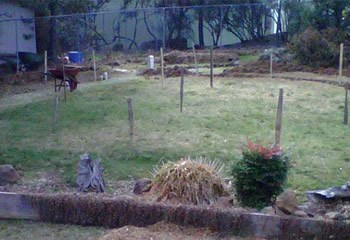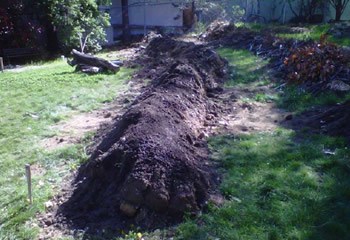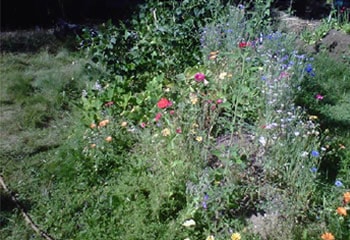Hugelkultur (“HOO-gull” (mound) culture) is a permaculture gardening method that utilizes buried logs to create an effective gardening and growing system with local resources and materials. A few of the key features of hugelkultur include:
- Decomposing logs absorb and hold water like sponges
- Yard waste and sod provide nutrients
- Polyculture planting attracts good insects, birds, and bees, reducing pests naturally
- Micro‐ecosystem of mound conserves and promotes healthy, biologically active soil for decades
- No crop rotation, no tilling, organic gardening
Steps for Putting in a Hugelkultur GardenHere are the basic steps involved in setting up hugelkultur garden. When moving forward with a project of this type, it can be really good ideas to seek out your local permaculture specialist to consult with and get recommendations on contour designs and planning help. This type of project is also great for having as the focus of a building party to teach others and get neighbors and community members involved and learning. Planning and design: |
|
|
|
- Follow contours of land - Design berms (mounds) to capture and hold water flow from rain - Observe path of sunlight to plan for proper sun/shade for crops - Design wind breaks with fruit trees as needed - Allow at least a 30 inch path between mounds |
Dig trench: |
|
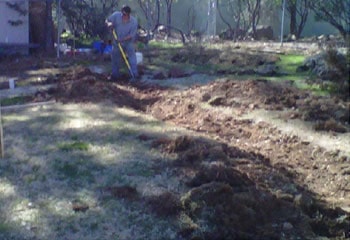 |
- Deep enough to capture flowing water (e.g., 4 to 12 inches) - As wide as the mound will be high (e.g., 3 to 6 feet) |
Lay down logs: |
|
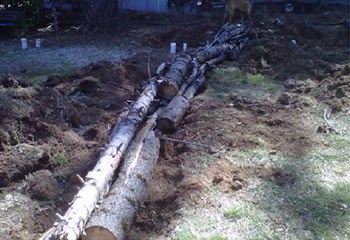 |
- Old, decomposing logs are best - Avoid pressure-treated wood, redwood, and black walnut |
Add yard waste or organic matter: |
|
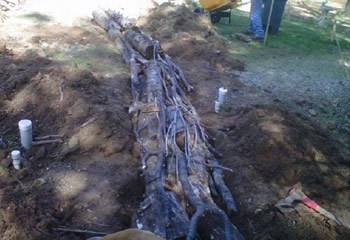 |
- Wood chips, branches, leaves, twigs are good - Anything that can be used in compost will work here |
Make the mound: |
|
|
|
- Use the soil from digging the trench - Turn sod upside down (grass side down) and lay on top - Add topsoil - Compost, humus are good additions - Inoculants as necessary (mycorrhizae, nematodes, nitrogen-fixing bacteria, etc.) |
Plant, grow, harvest: |
|
|
|
- Plant vegetables, companion plants, and flowers to attract bees, birds, and bugs - Plant fruit trees next to mounds as desired - May need water during first year, until wood decomposes enough to hold water - Enjoy! |
Building the hugelkultur beds on our property was an incredible experience. I invite you to explore and use this wonderful method of gardening for your growing spaces. If you have any additional tips and suggestions, please post them in the comments section for all to learn from and share in your experiences.
Additional Resources and Information
- PP discussion thread on hugelkultur
- Rich Soils: http://www.richsoil.com/hugelkultur/
- Sepp Holzer's Permaculture: A Practical Guide to Small-Scale, Integrative Farming and Gardening
- Hugelkultur: The Composting Raised Beds
~ Dave Barnett
This is a companion discussion topic for the original entry at https://peakprosperity.com/building-with-hugelkultur/
